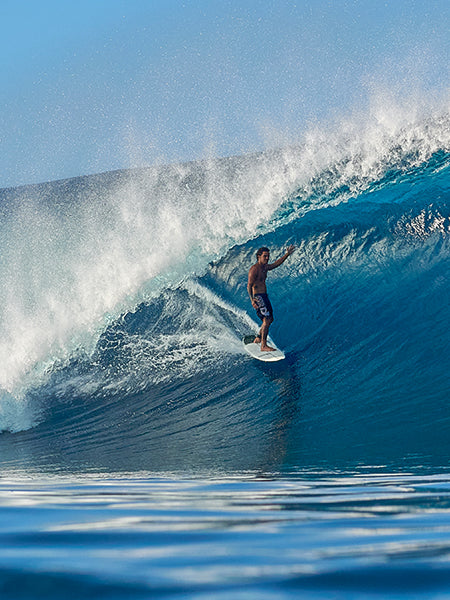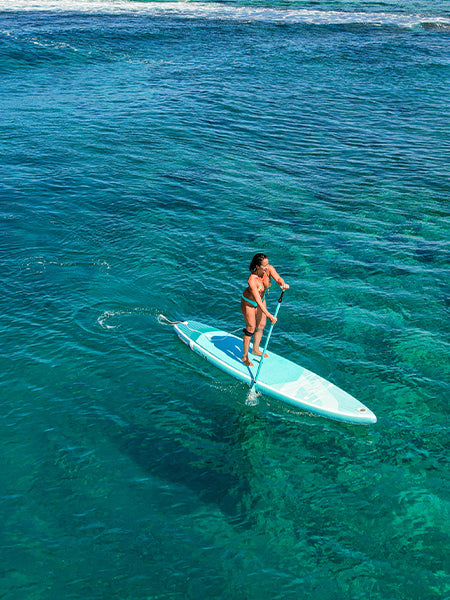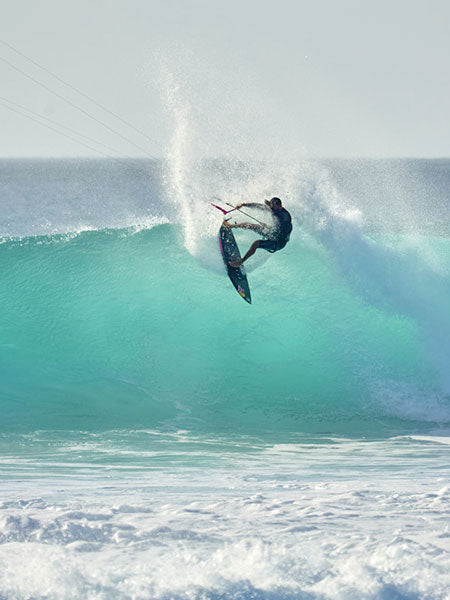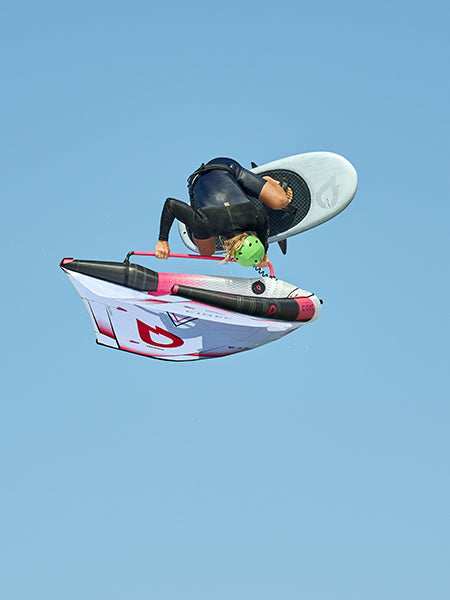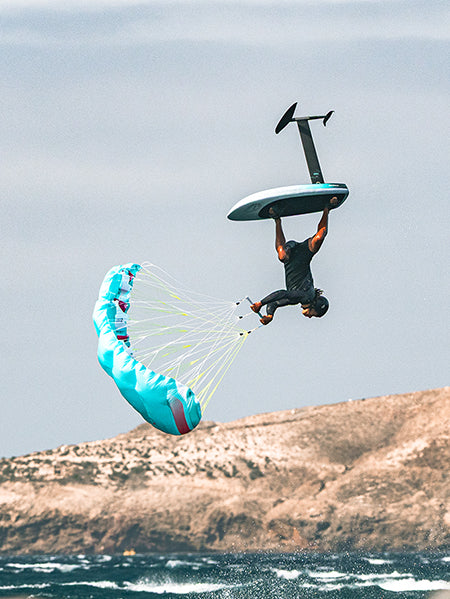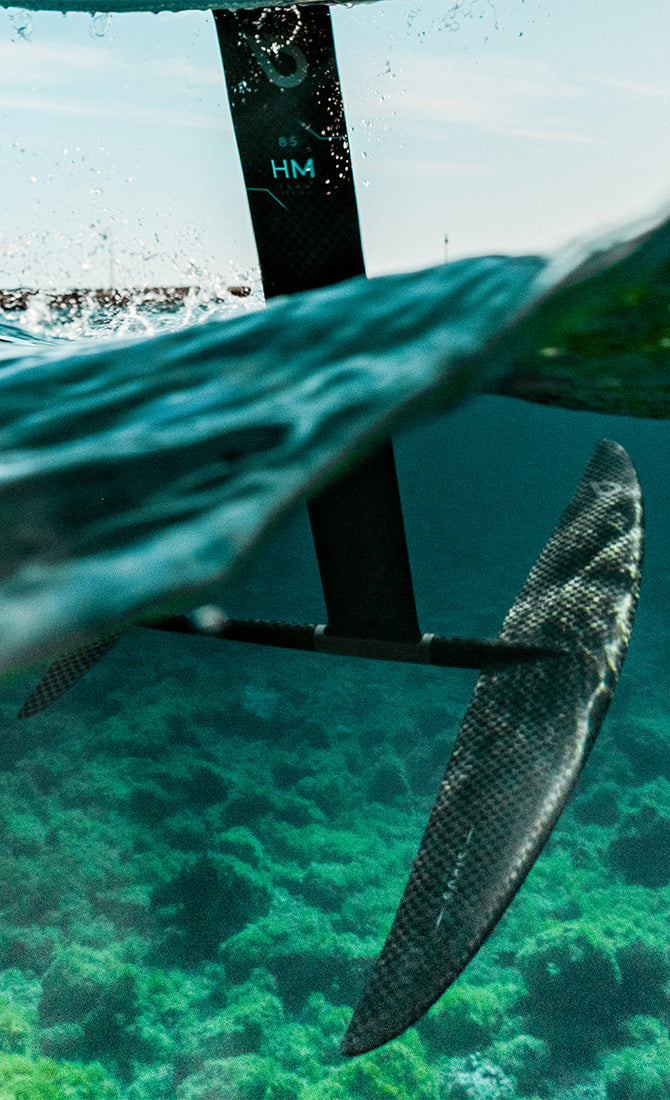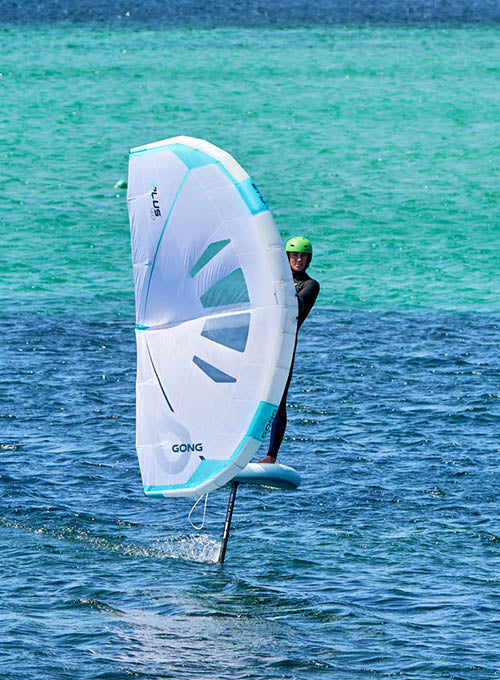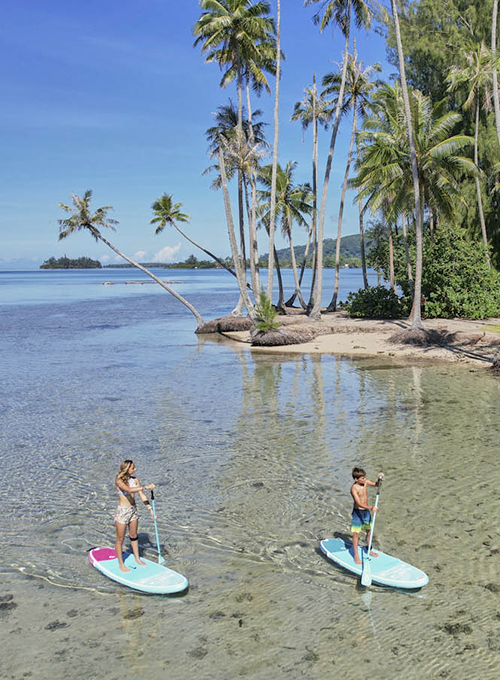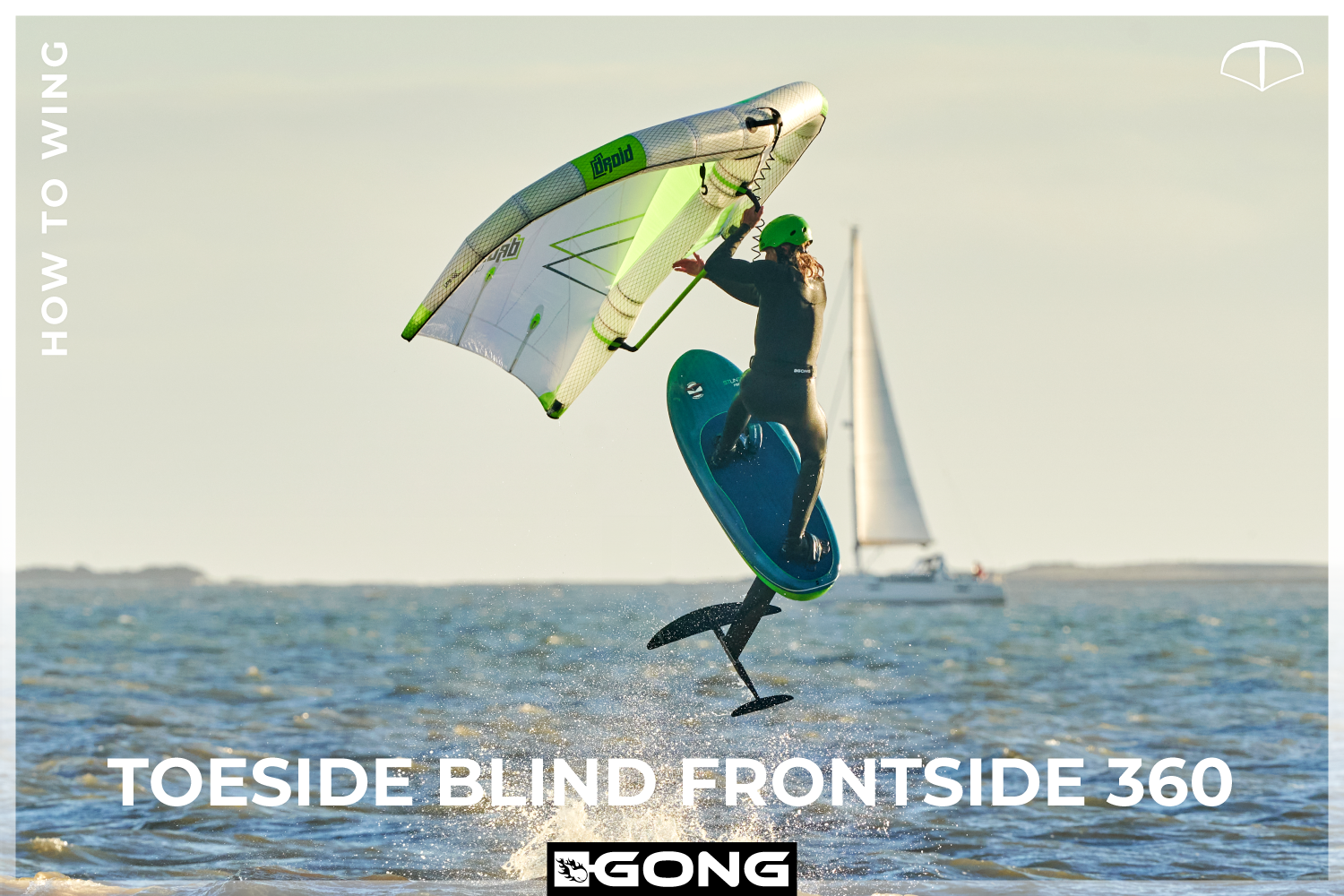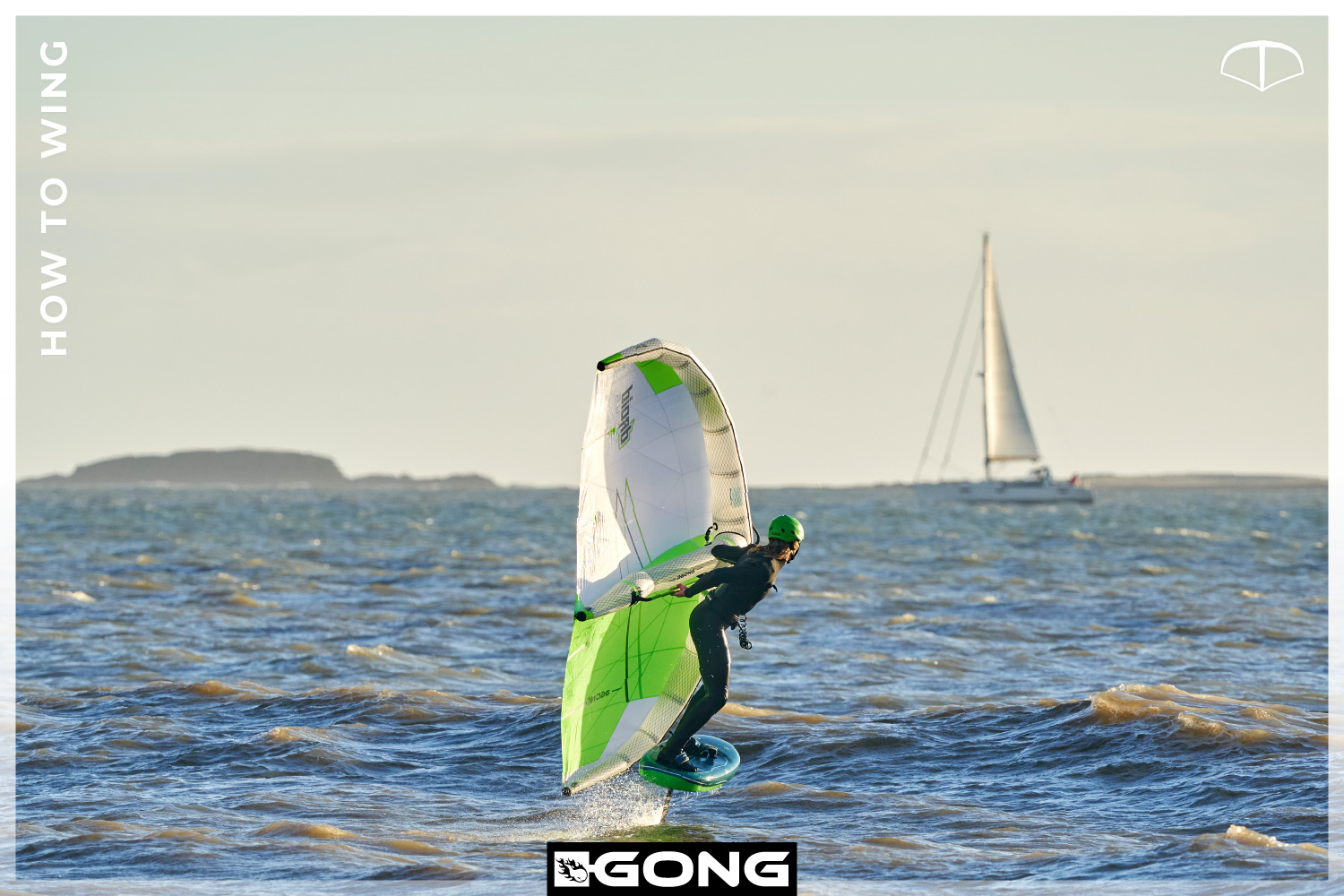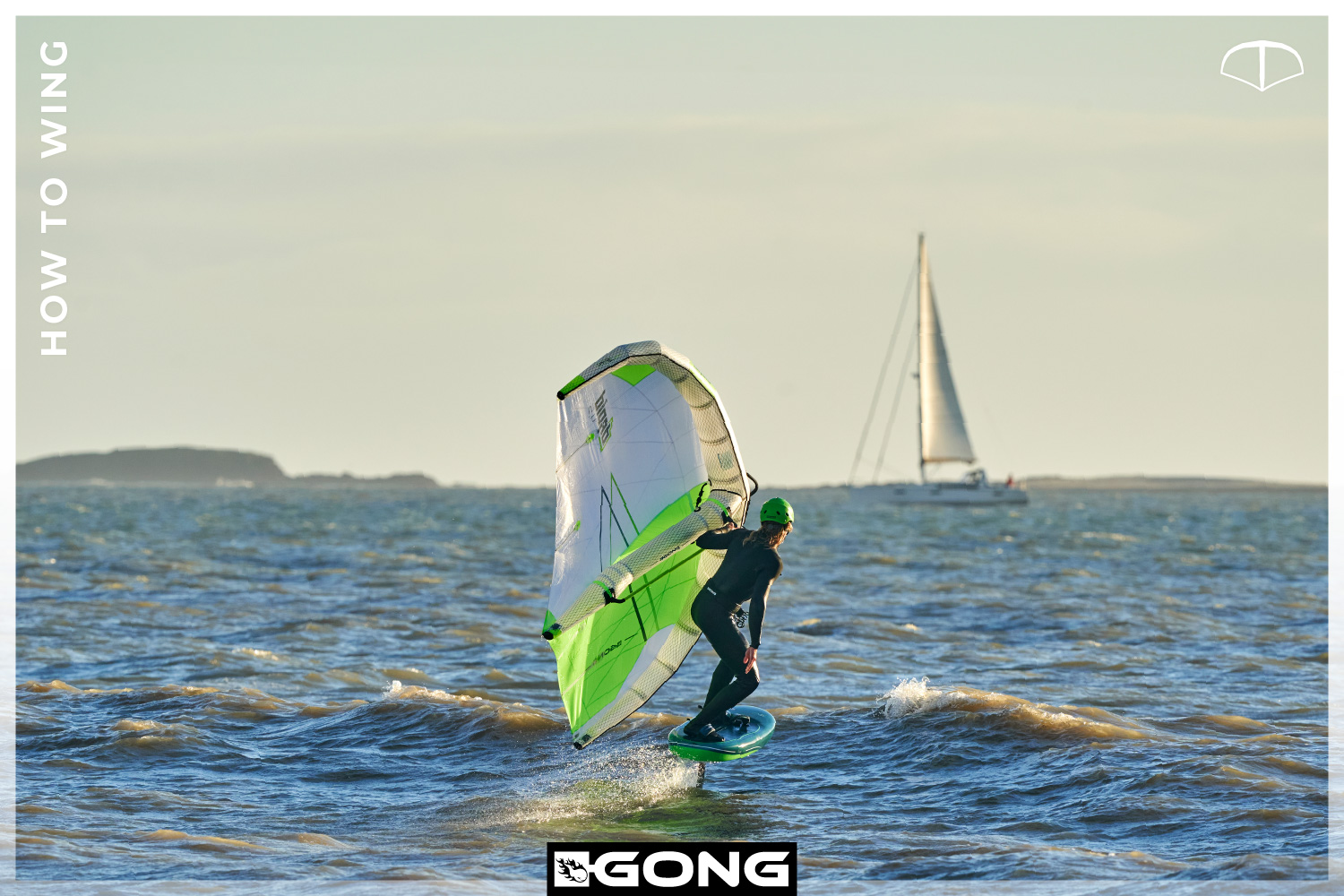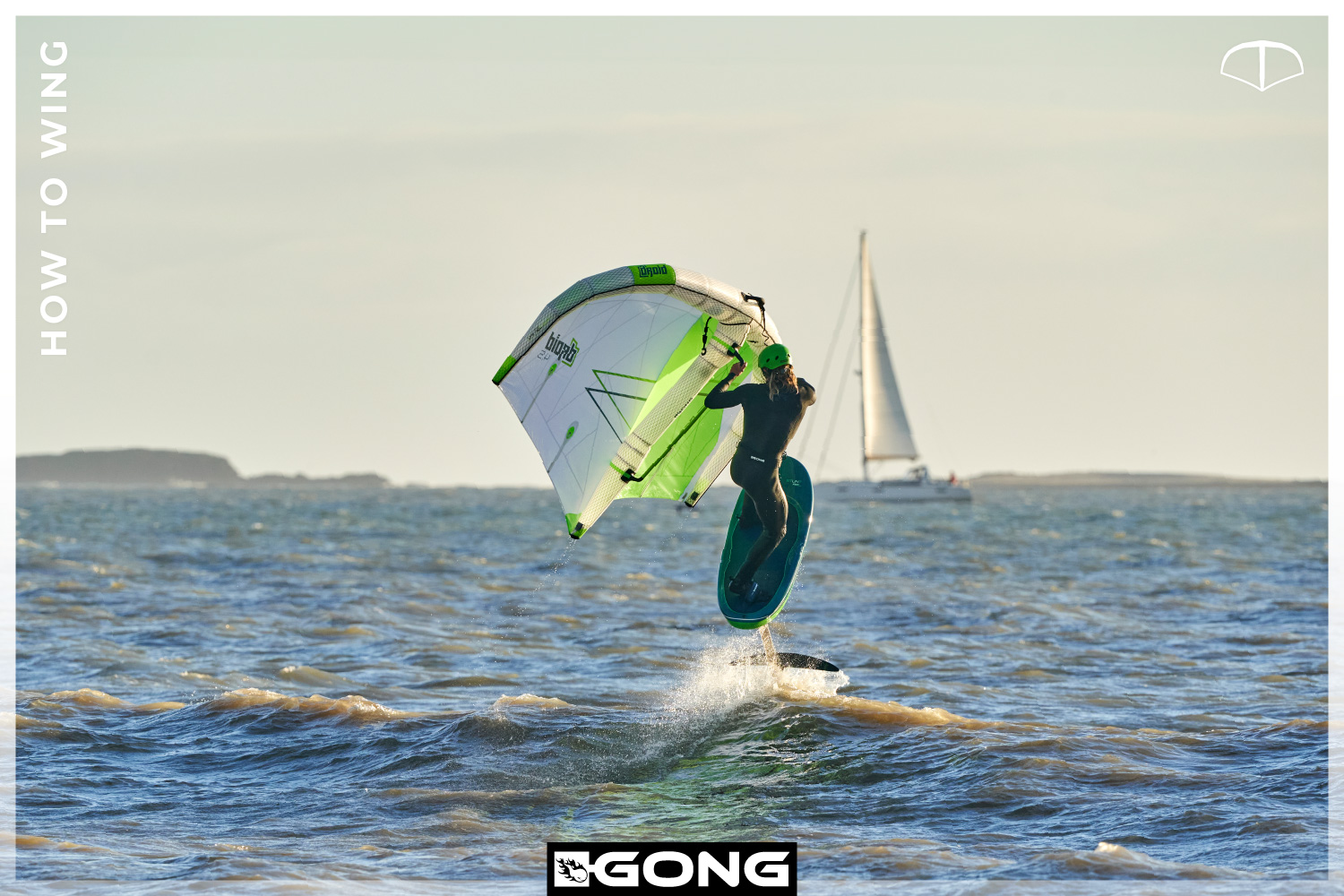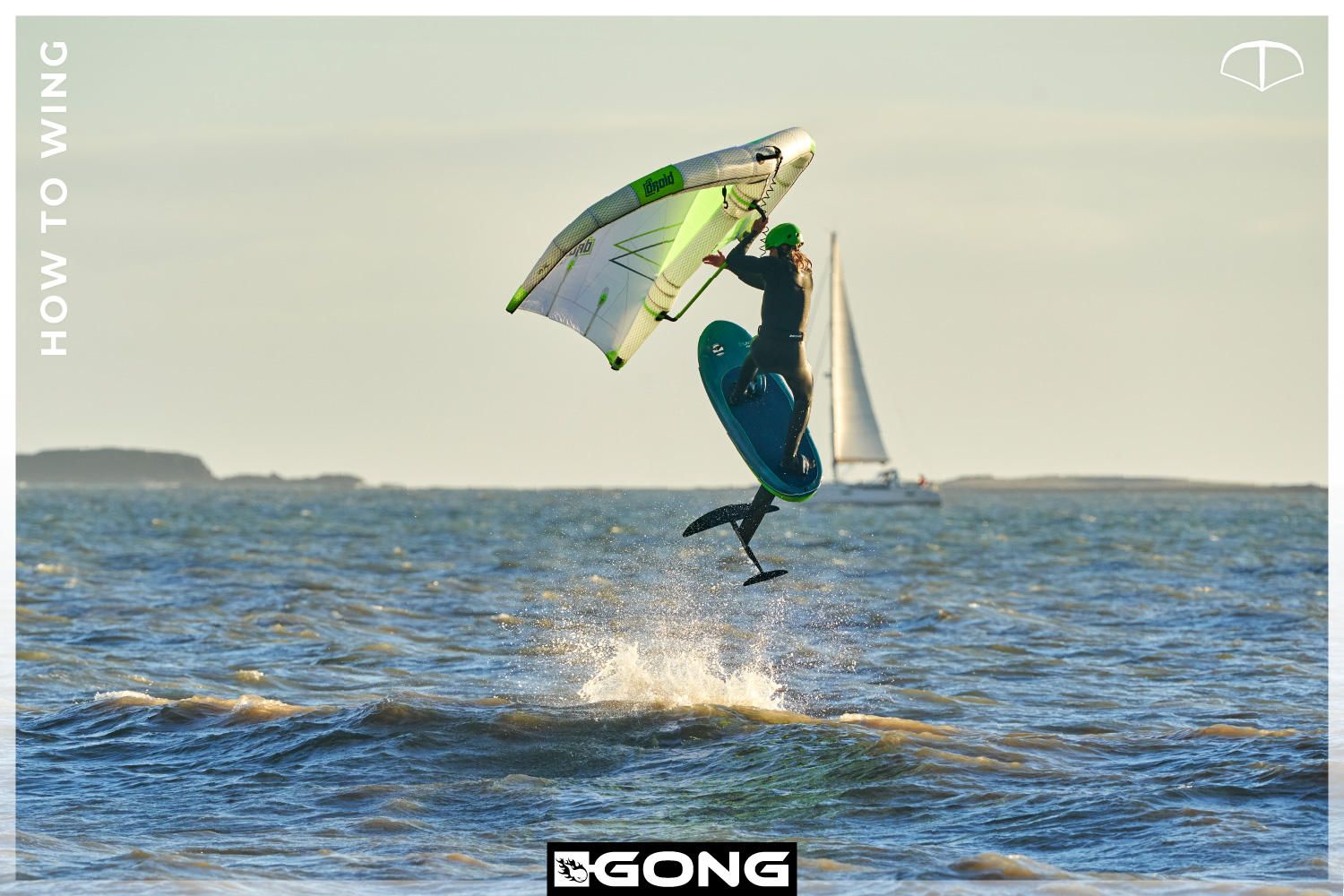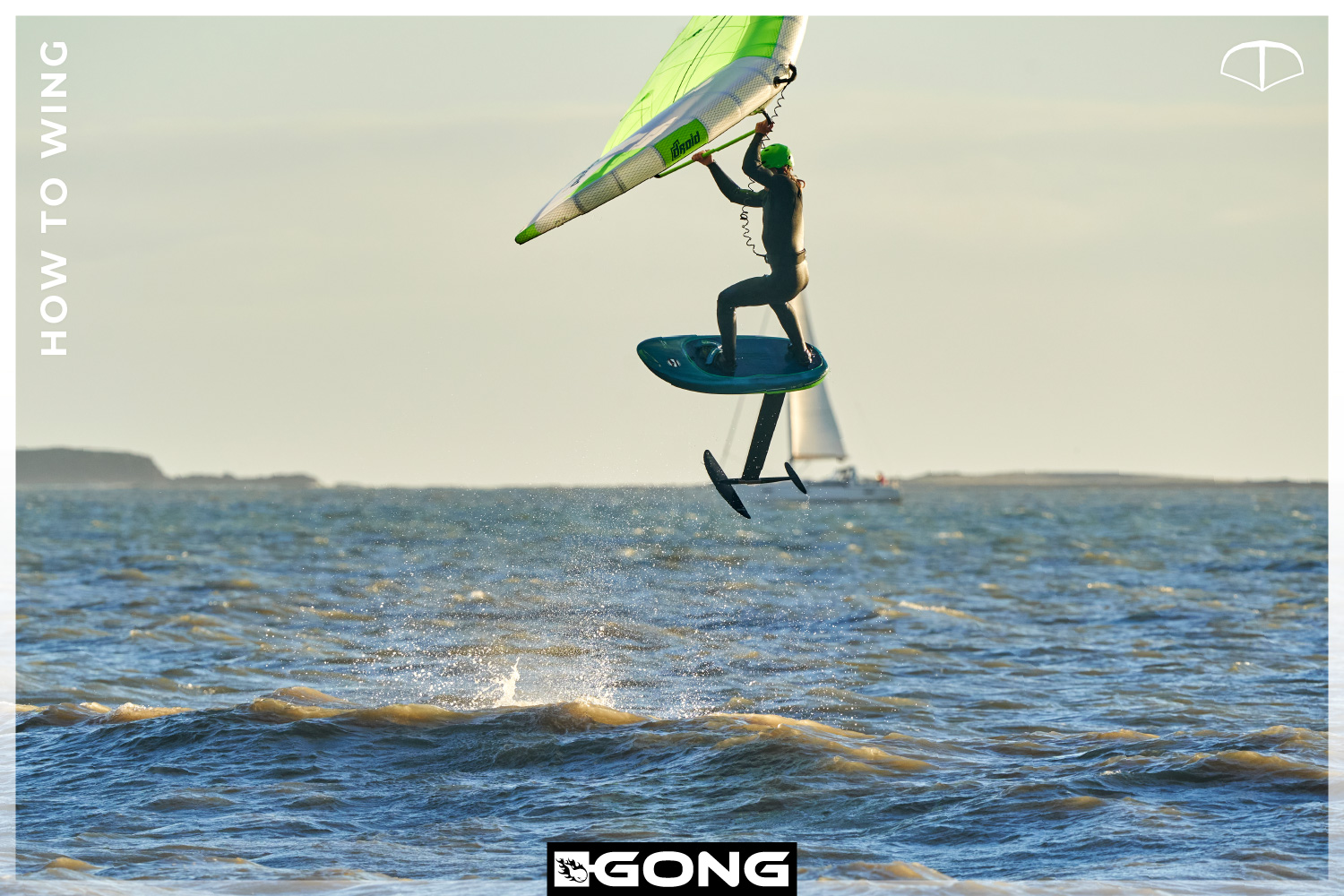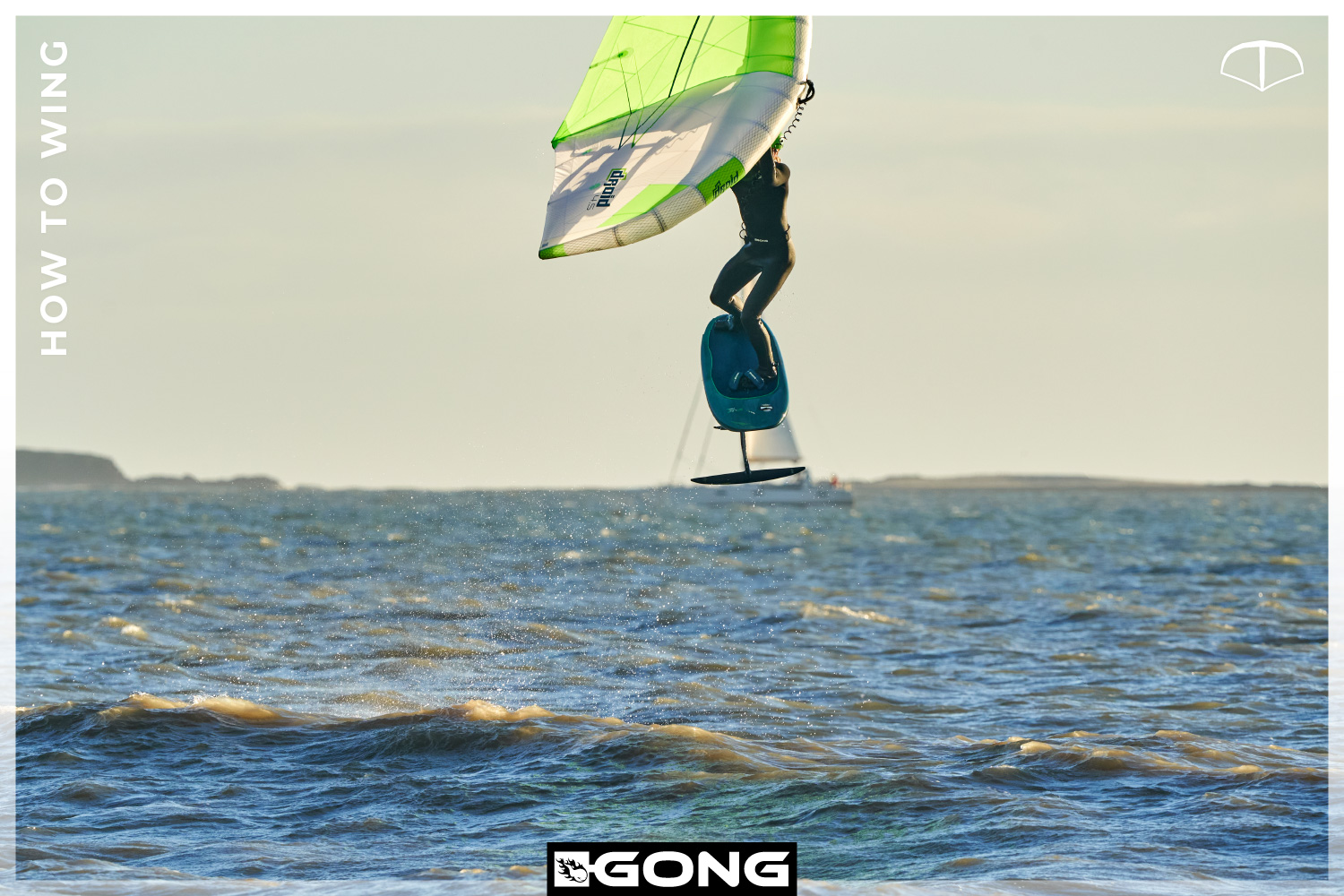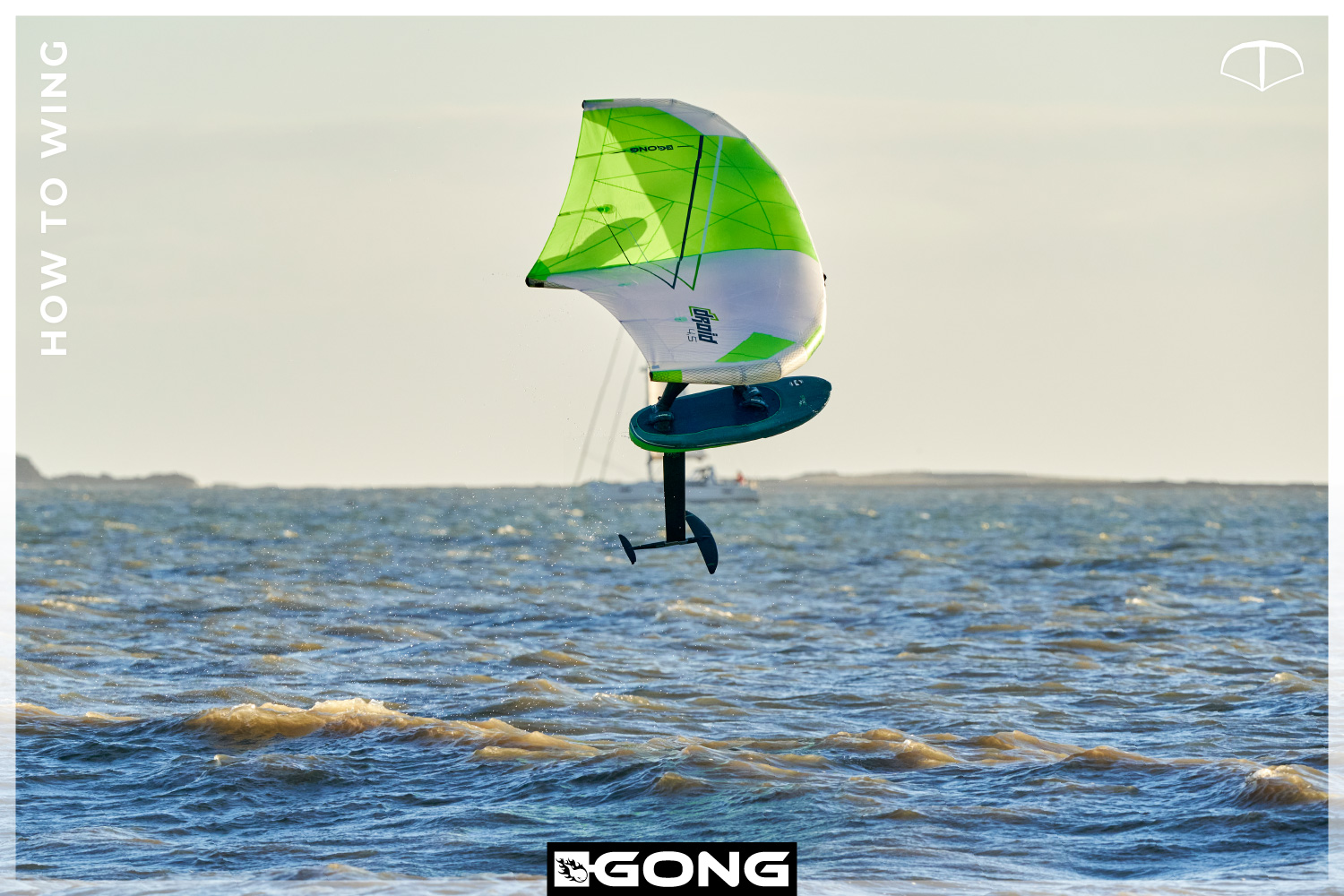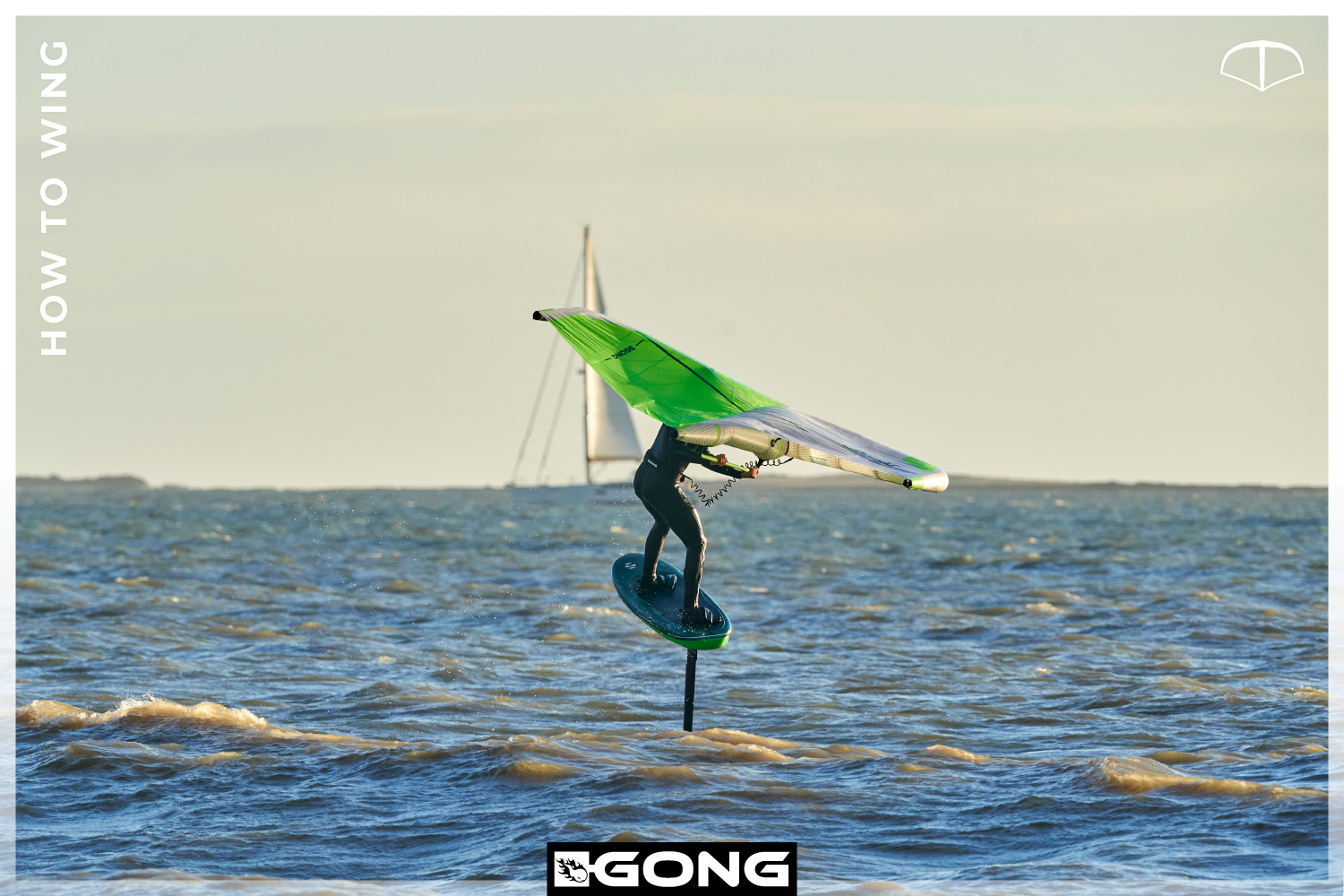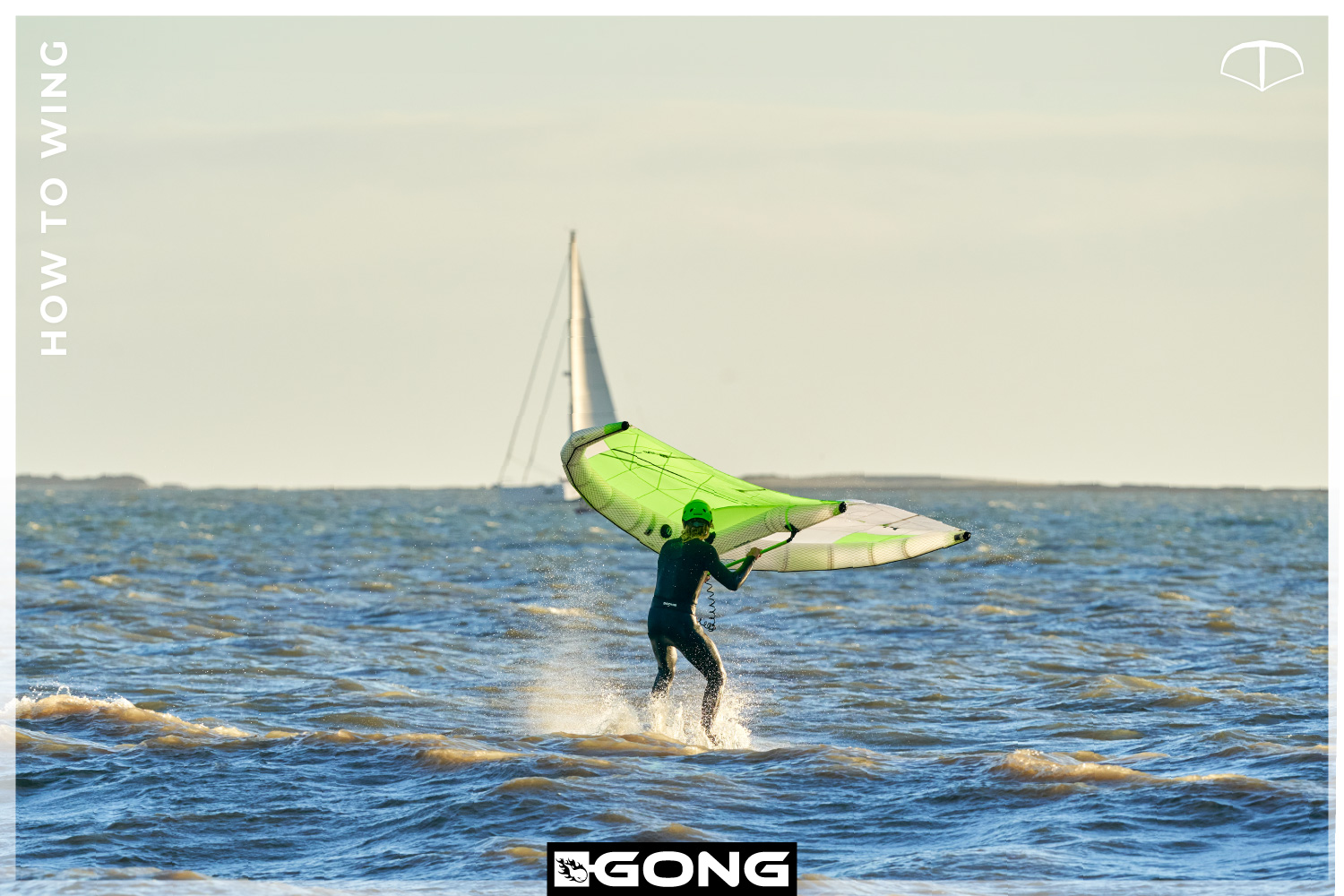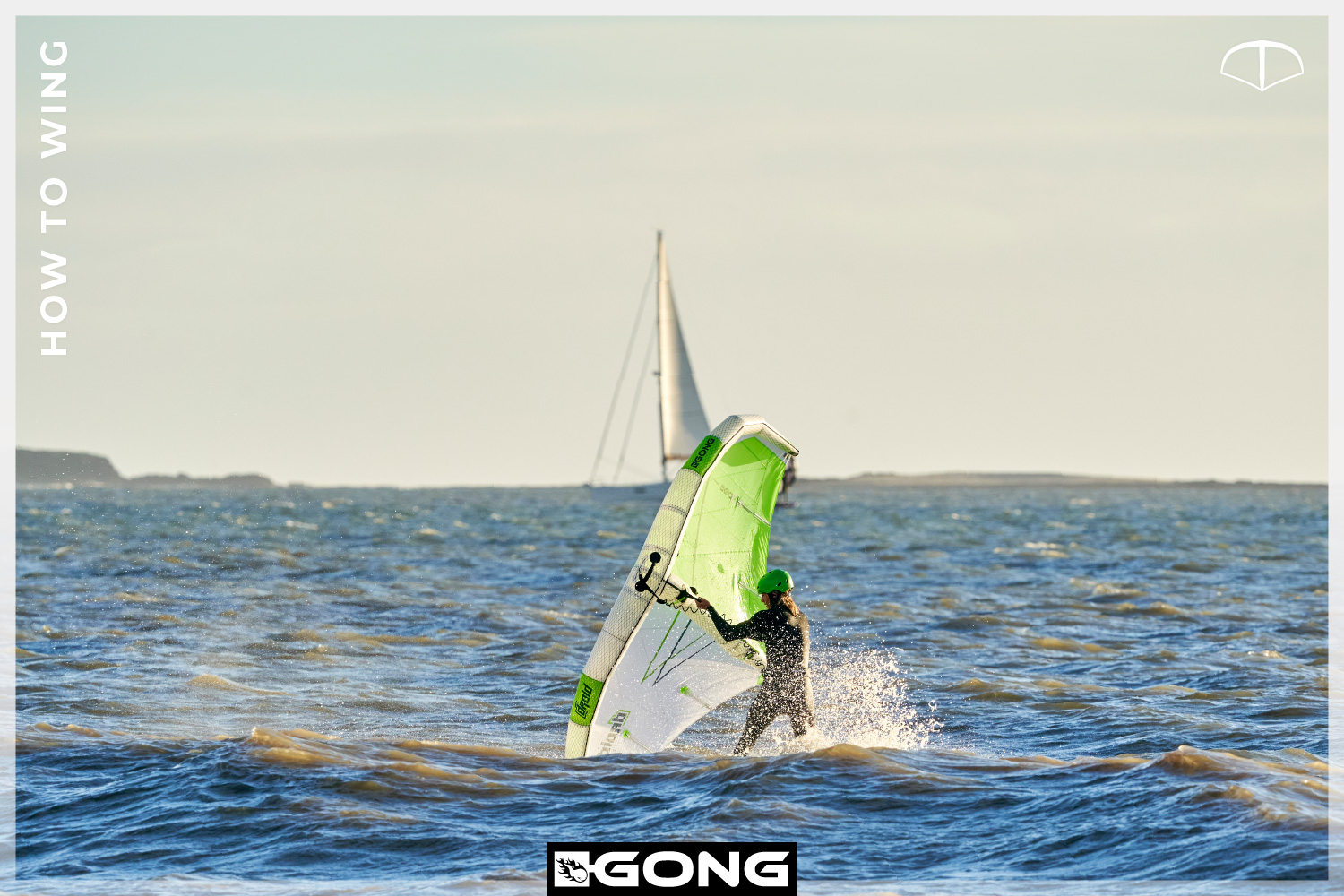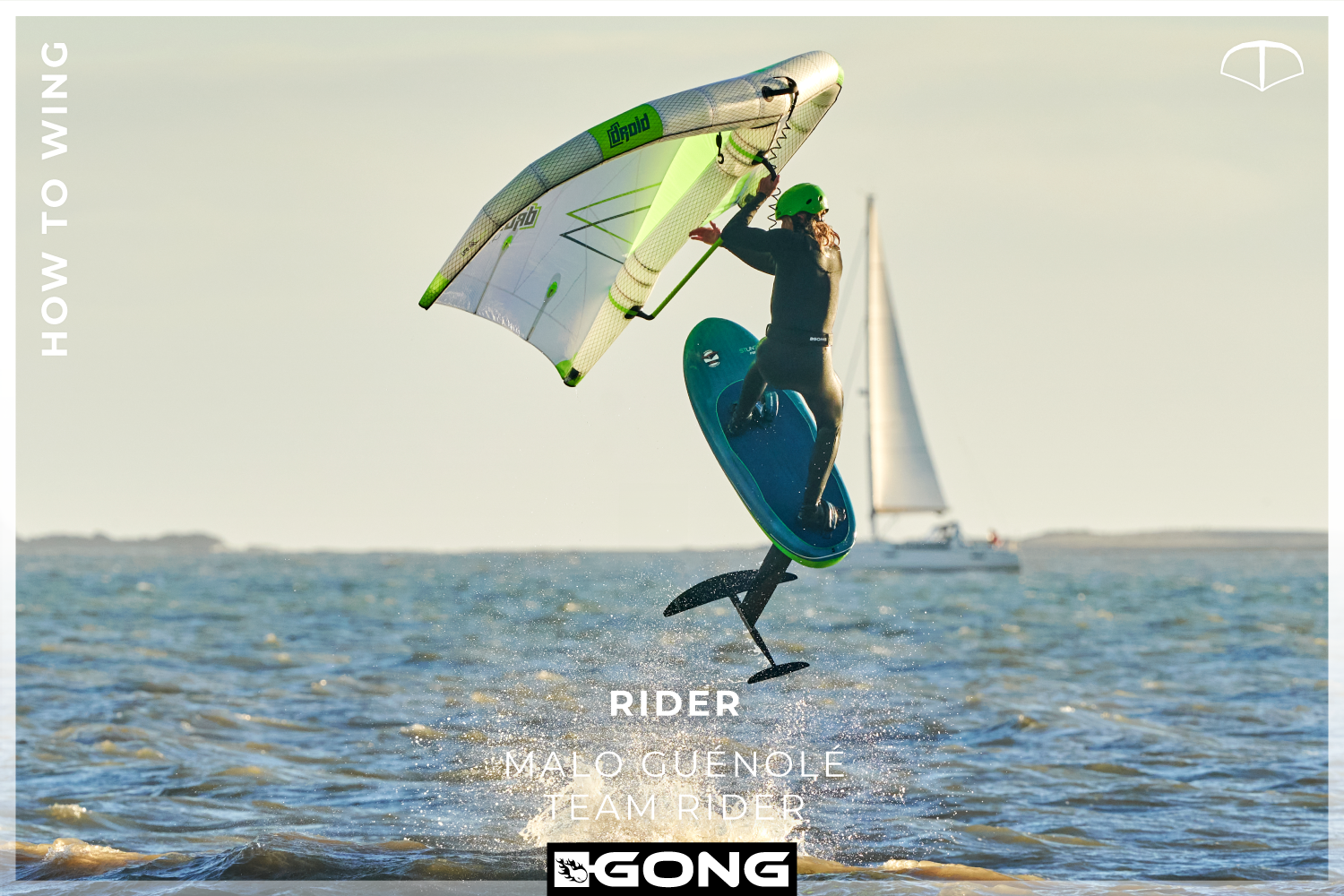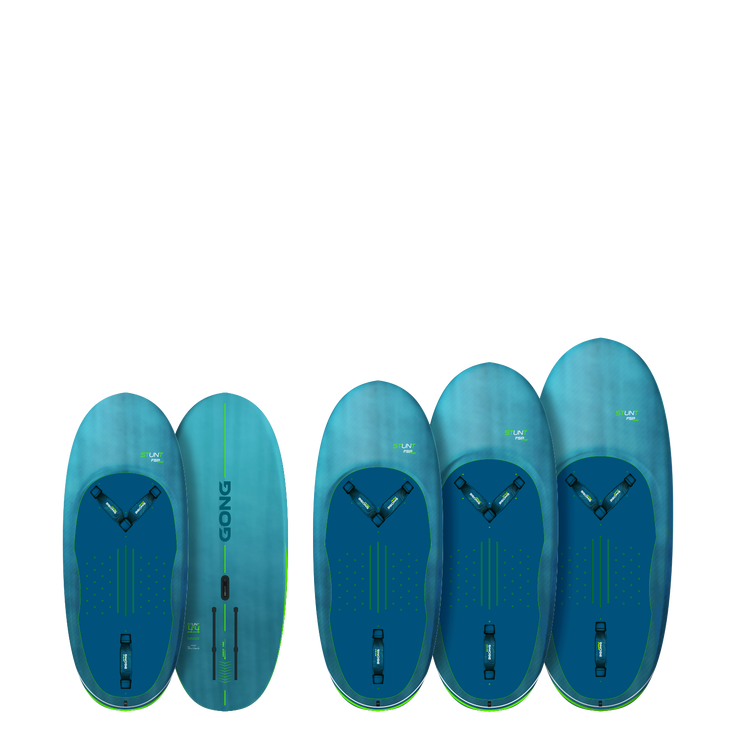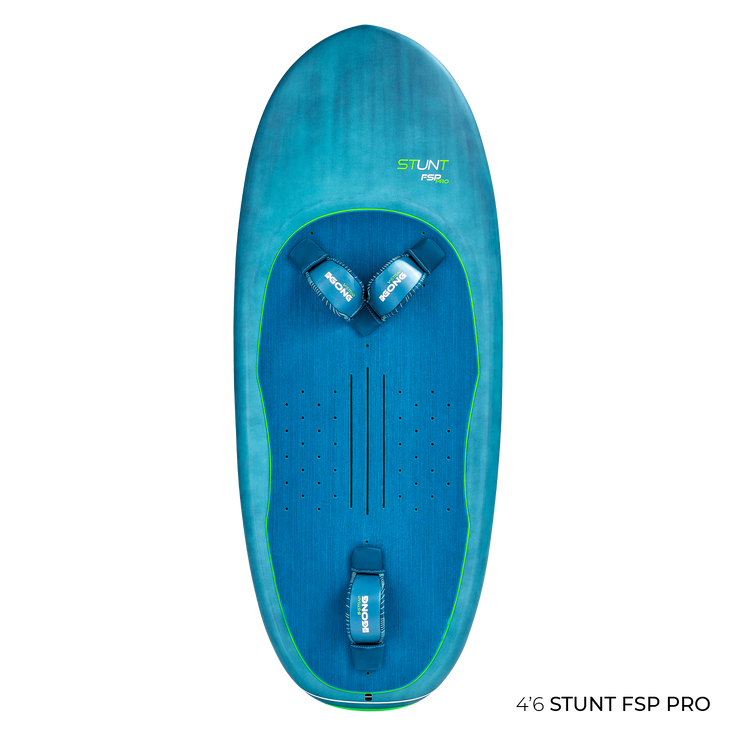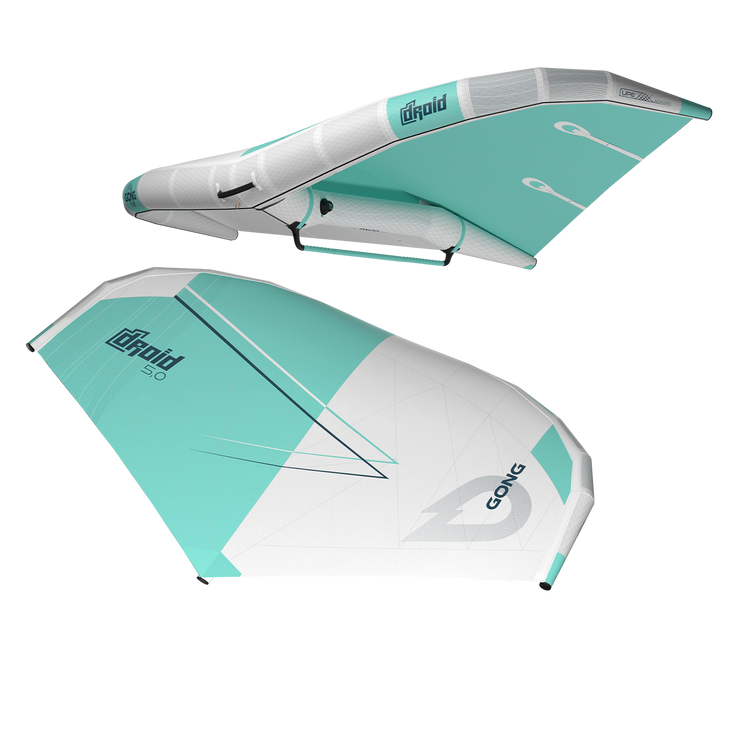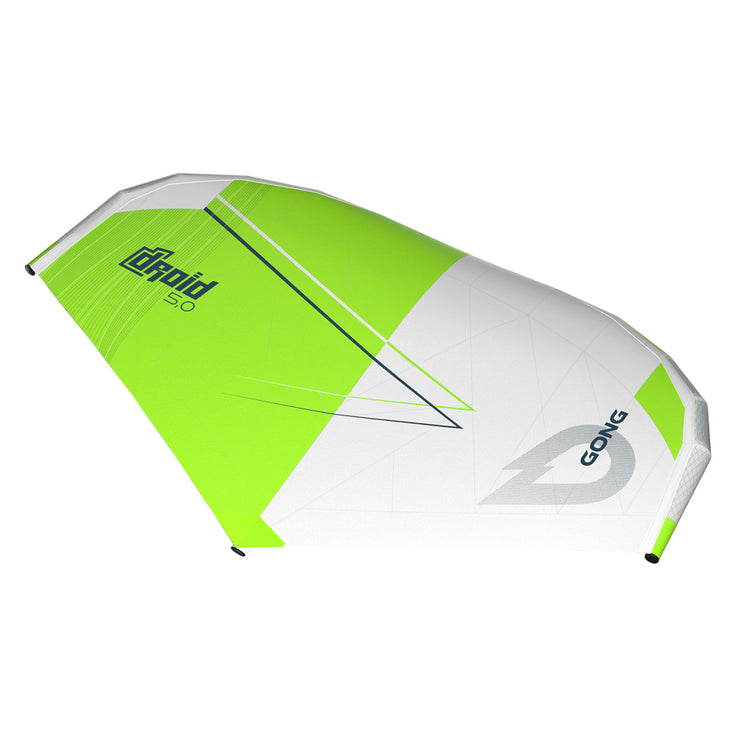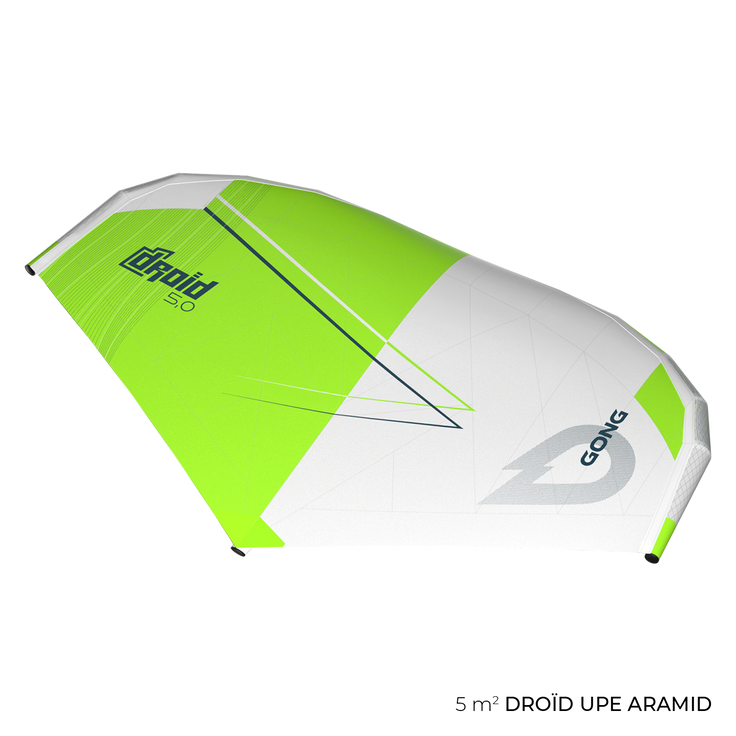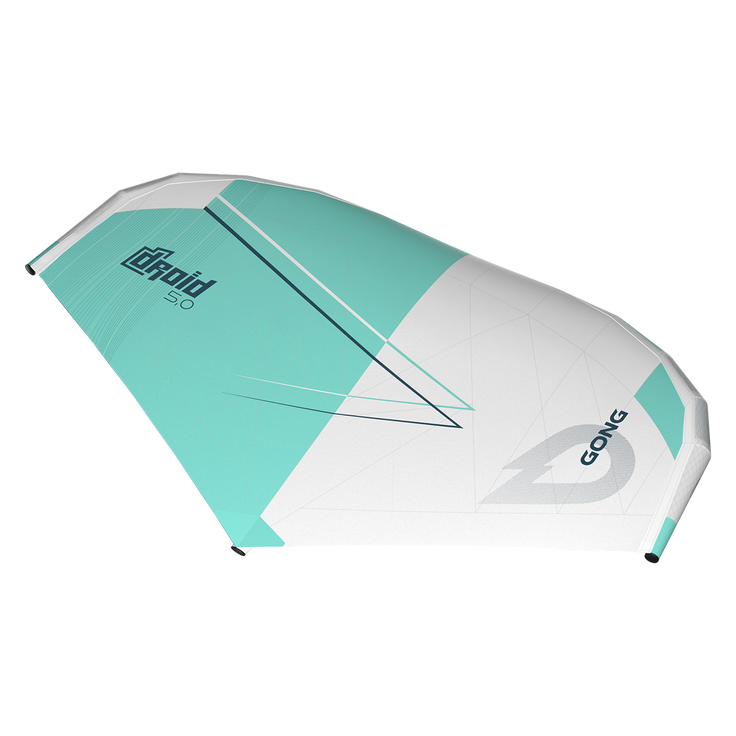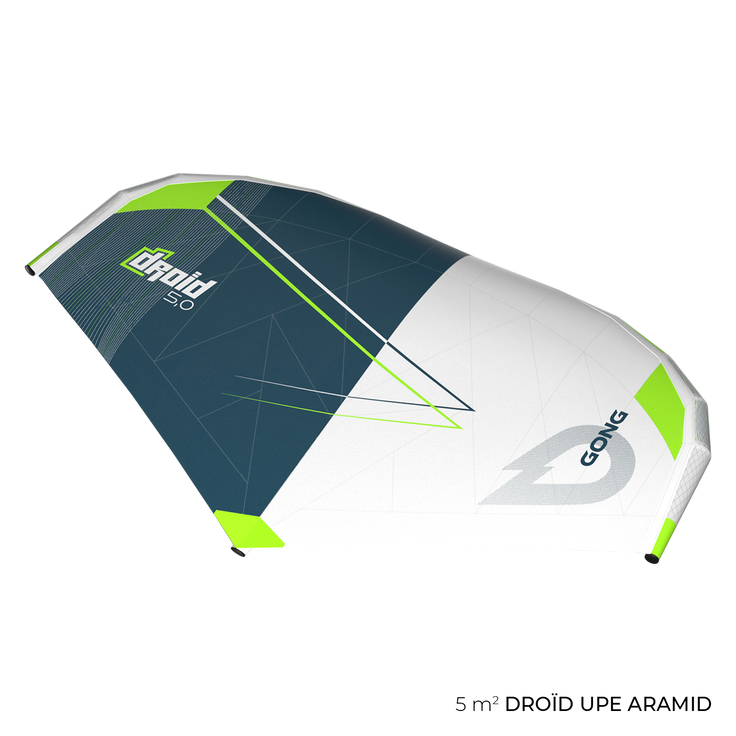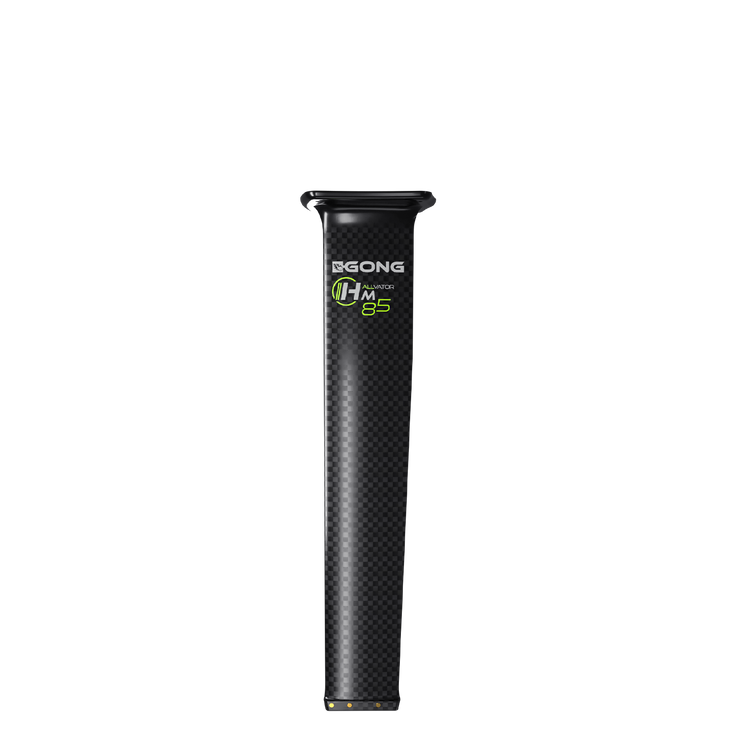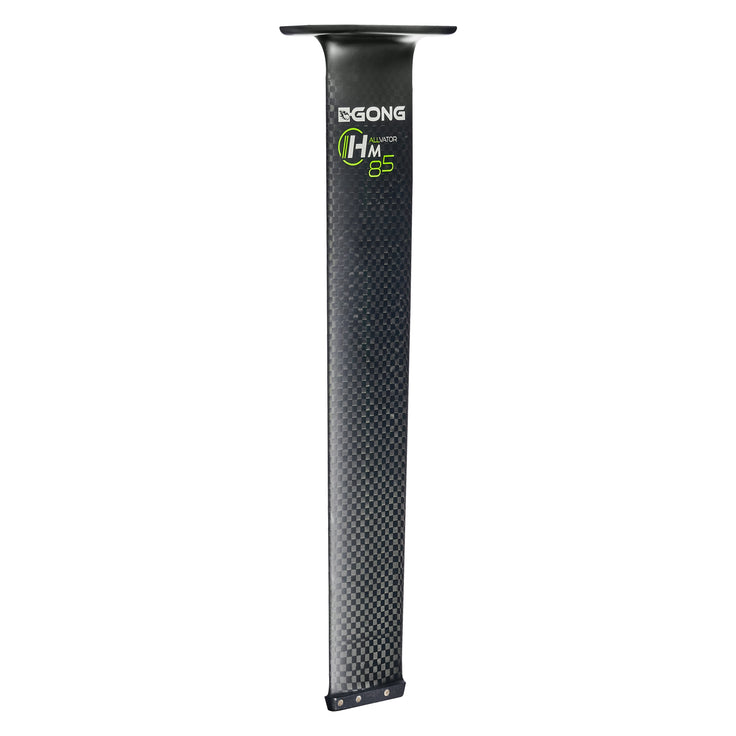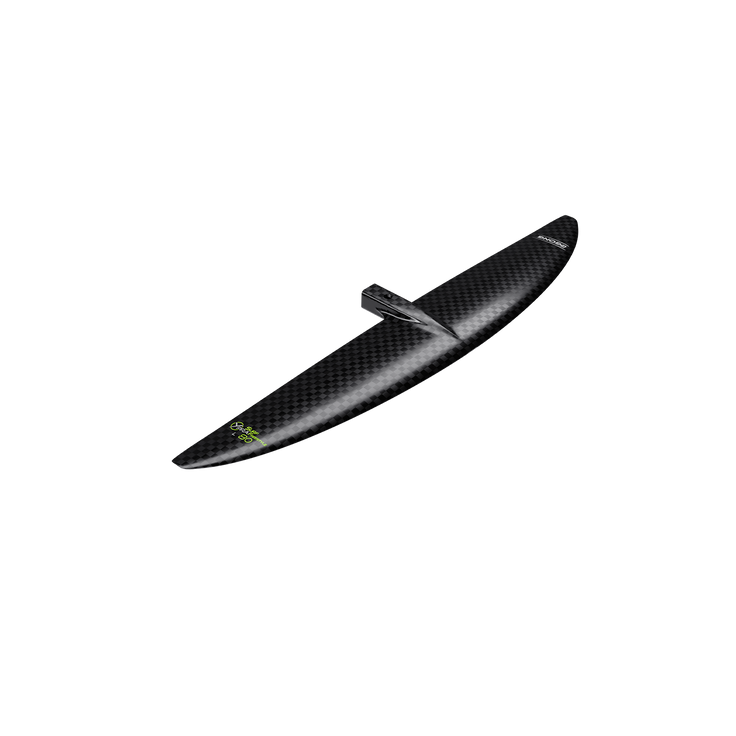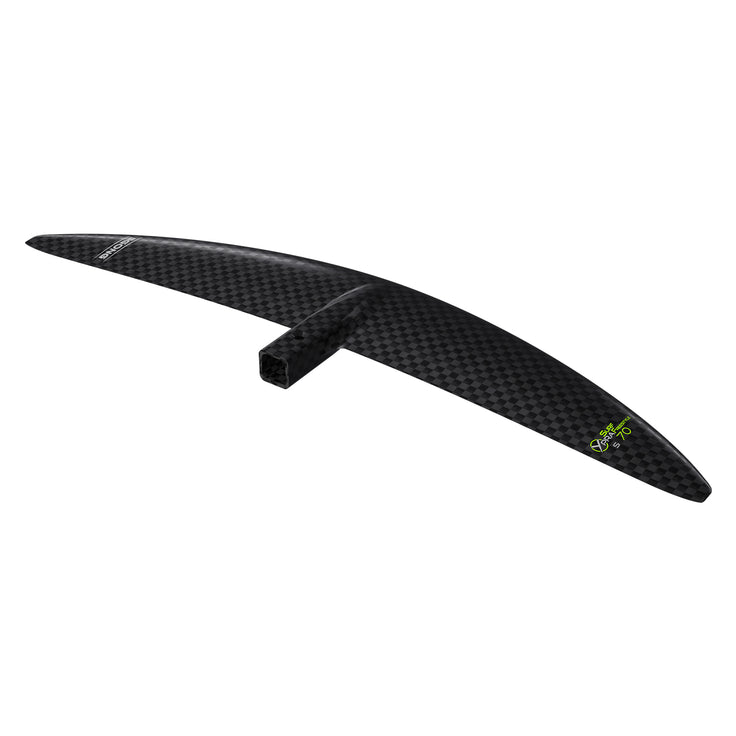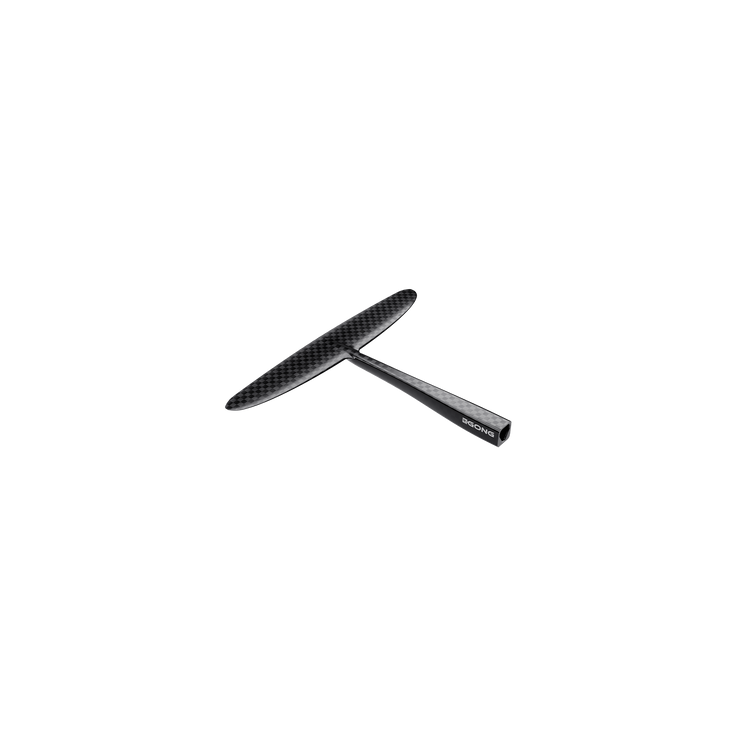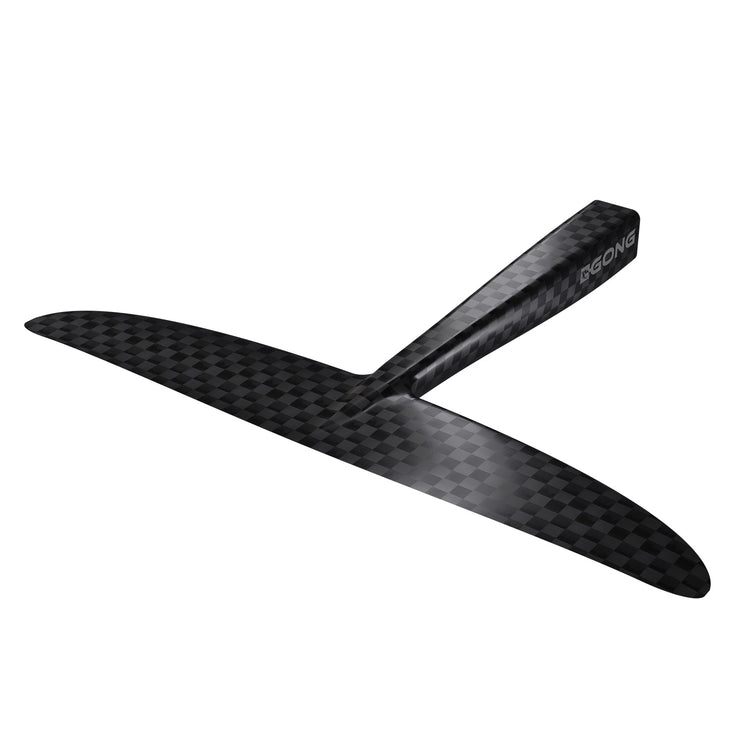Turn your back on basic transitions and your wing with the Toeside Blind Frontside 360 or 540!
The Toeside Blind Frontside 360 or 540 is a pure freestyle trick inspired by windsurfing. It follows the Toeside Blind Air Jibe. This trick should be mastered before attempting a full rotation or more. The difference between a 360 and 540 depends on the extent of the rotation in the air.
In any case, you do 540 degrees of rotation, but if the last half-turn occurs in the water, it’s considered a 360. Follow Malo’s explanations to complete your blind rotation! Basic score on the World Tour: 3.75 out of 10.
Wing foiler: Malo, team rider GONG, on Stunt FSP Pro, Droid UPE Aramid, HM85 mast, front wing Ypra Surf-Freestyle and Freestyle stabilizer.
Ideal Conditions
“To perform this trick, most conditions are suitable. Of course, be reasonable and don’t attempt your first try in front of a 3m wave in 50 knots; you might be a bit overwhelmed. Sending it towards a small kicker can help you gain height without being at full speed, which is challenging in blind conditions.
For equipment, executing and landing the trick is easier with a pure freestyle board, but most importantly, the key is to strap yourself in and wear a helmet. The use of a boom is also a plus. In a rush, it’s easier to grab any part of the boom than trying to catch the handle in the air.”
Transition to Blind Position
“You’ll need to position yourself as if you were about to perform a Toeside Blind Air Jibe. To recap, you have to go toeside, bear off slightly, change your hands to go blind (rear hand becomes front hand, and front hand becomes rear hand while you put your back to the wing), and gently edge again to avoid going too far downwind.
Once you’re in a good position to send it, you need to find a suitable section of the water. I recommend aiming for a face wave or kicker. Sending it towards a small kicker can help you gain height without being at full speed, a challenge in blind conditions.”
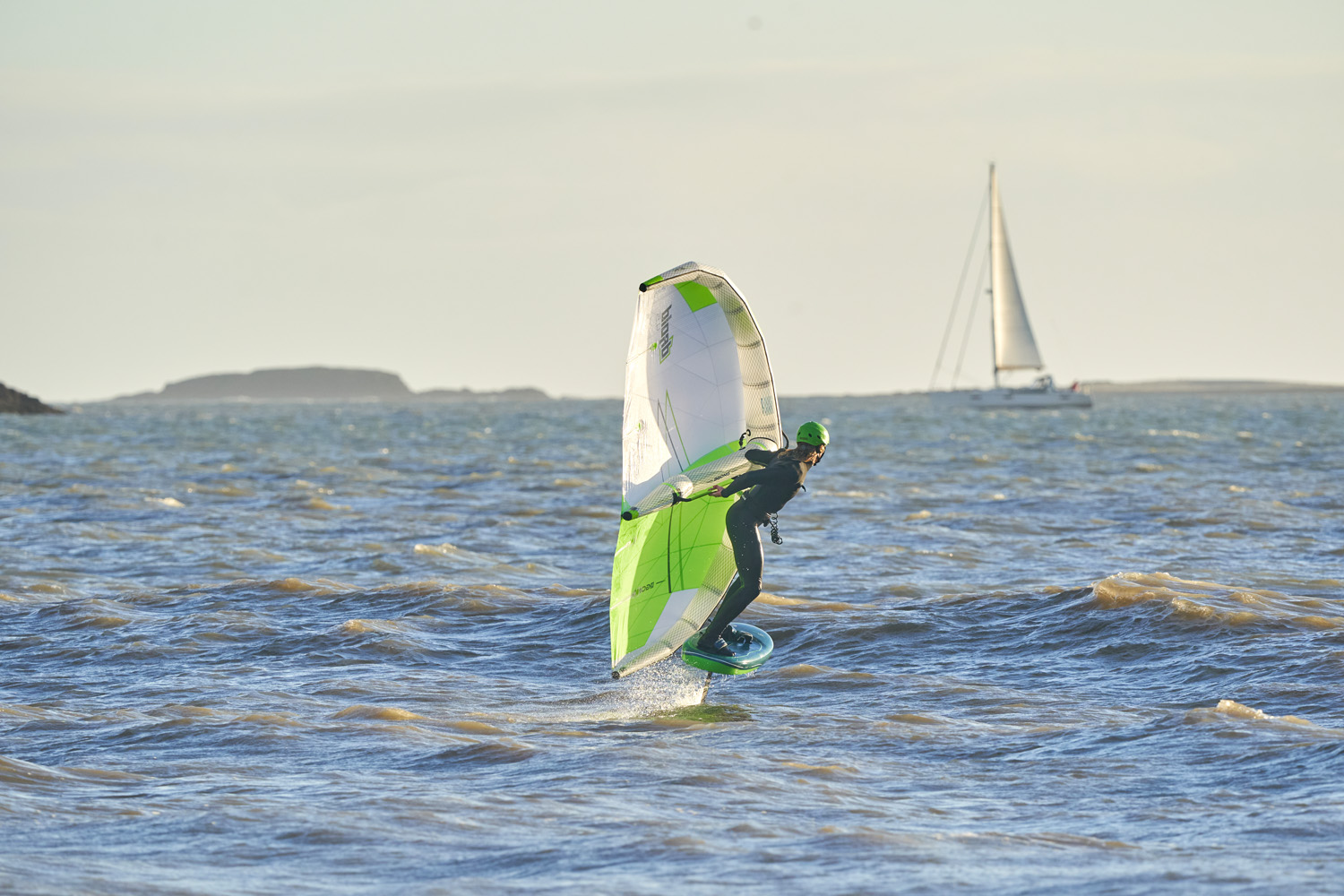
Jump with Clear Intent
“First, you’ll need to pop. Think of making the same pop as for the Toeside Blind Air Jibe but more energetic. You’re supposed to do an extra half-turn in the air, so you need to emphasize each movement. Push harder with your legs, always with a bit more pressure on the back.
Simultaneously, you need to swing your rear arm forward to reach for the wing with your hand. After that, you should be initiating your ascent in the air and your rotation. At this point, send the board by pushing with your rear foot, so the board follows the rotation of your upper body.”
Hand Switch and Second Half-Rotation
“Now, if everything went well, you should have already completed your 180° in the air. If you’ve intensified each movement of the pop and the start of the rotation, you should have turned more than in your usual Toeside Blind Air Jibe.
Now, you need to catch the wing, which should be roughly in front of you, with your free hand. By now, you should be familiar with this movement, so it shouldn’t be a problem. However, when you catch the wing here, you won’t touch the water directly, and that’s where things get tricky.
You need to use the energy of your rotation to continue it but with the wing in both hands. As soon as you have the wing in your hands, push with the rear hand and bring the front hand in front of your head. By pushing with the rear hand, you initiate the rotation of the wing, which will then follow the rotation of your body. Bringing your front hand in front of your head almost neutralizes the wing, preventing you from being pulled afterward.
Additionally, add your gaze to this. Look over your windward shoulder at the landing point, which will be in front of you at the end of the 360.”
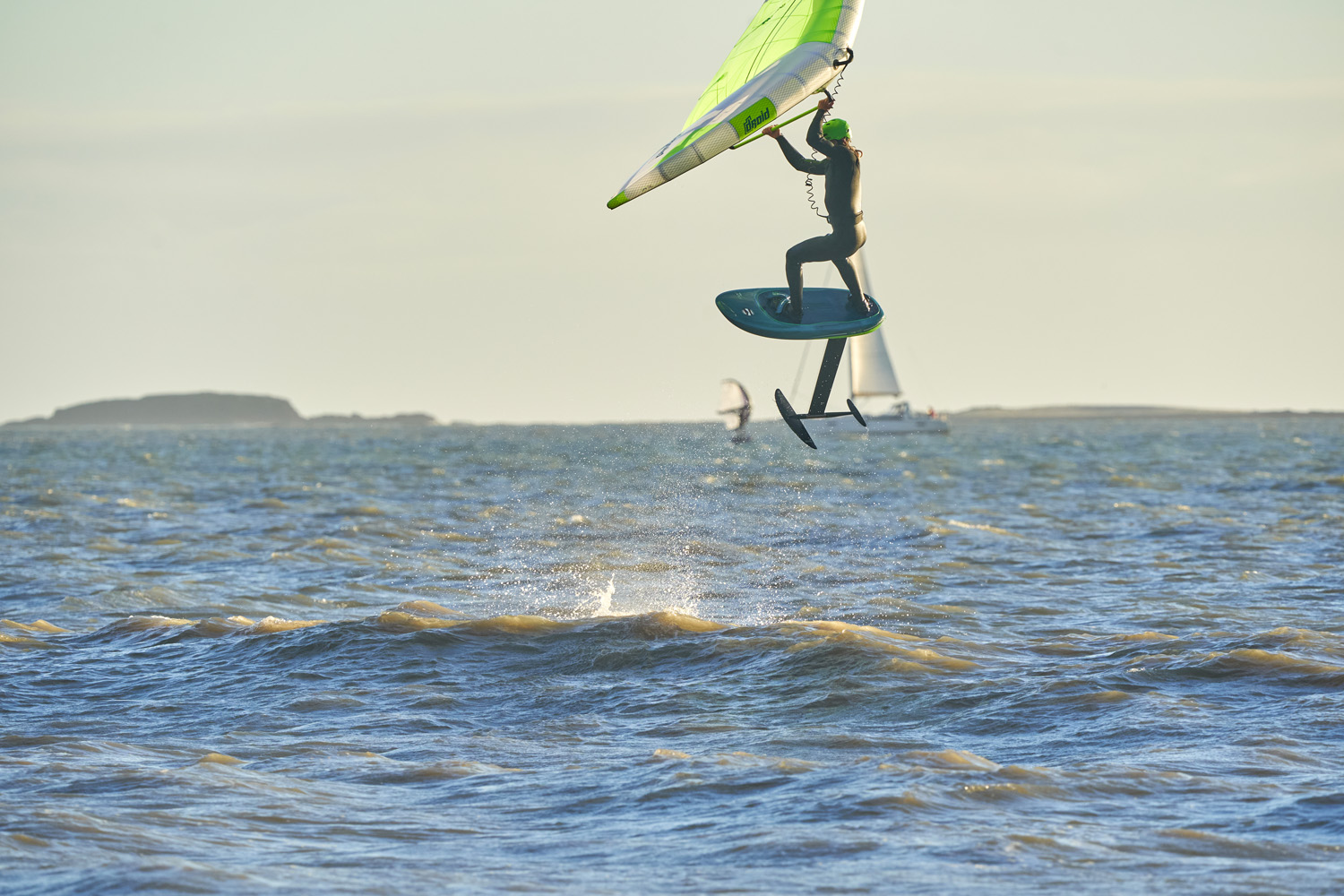
Control the 360° Rotation
“Now two options are available: finish the last 180° on the water or complete it in the air. Let’s focus on the 360 first.
If everything went as planned, you should find yourself in the air, looking for your landing spot while finishing the board’s rotation and continuing the wing’s rotation. The wing should be windward, with the center strut in front of your head. At this point, stop pushing with the rear hand until landing and control the descent.
Ensure that the wing stays flat. If it’s too open, it will pull you over. If it’s too closed, it will go against you and push you backward until you end up flat on your back. So make sure it stays flat.”
Wing Angle for Landing
“Now comes the time for landing. Prepare for it by staying above the board and flexing as soon as the foil touches the water. As soon as you make contact with the surface, you’ll likely start sliding due to your speed. That’s when you’ll finish your rotation.
To do this, continue the wing’s movement naturally by pushing again with your rear hand and keeping your front hand fixed at the level of your head. Keeping the front hand in the same place will make the wing rotate around a point, helping you maintain balance.
Pay attention to the wing’s angle; it should be at 45° to the water. If it’s more open than this angle, you’ll get pulled. Also, since you’re on the water, if the wing pulls hard, the rest won’t follow. But be careful not to close it too much; it might be a bit more challenging to handle initially. It might push you backward, and you’ll end up on your back. So remember about 45°.
Try not to let the wing turn too quickly; it’s supposed to stop in front of you in the restart position. If you allow it to keep turning, it might carry you away, destabilizing you, leading to a fall. Also, if you manage to stay upright despite this, the wing might want to continue its rotation even if you’ve finished yours. It will continue until it faces the wind, losing all its power, and you’ll have only your balance to stay upright (which is often not an easy task).
In theory, the board should naturally follow the movement on the water. But if you feel that’s not entirely the case, you can slightly force it by pushing the rear foot, which will shift the tail of the board and make it turn.
In summary, you need to pay attention to two things on landing: the angle at which you will turn the wing and, most importantly, control the rotation to avoid being carried away.
Now that all of this is done, all you have to do is pump your foil and wing to take off again, and the trick is done! You’ve landed your first Toeside Blind Frontside 360!”
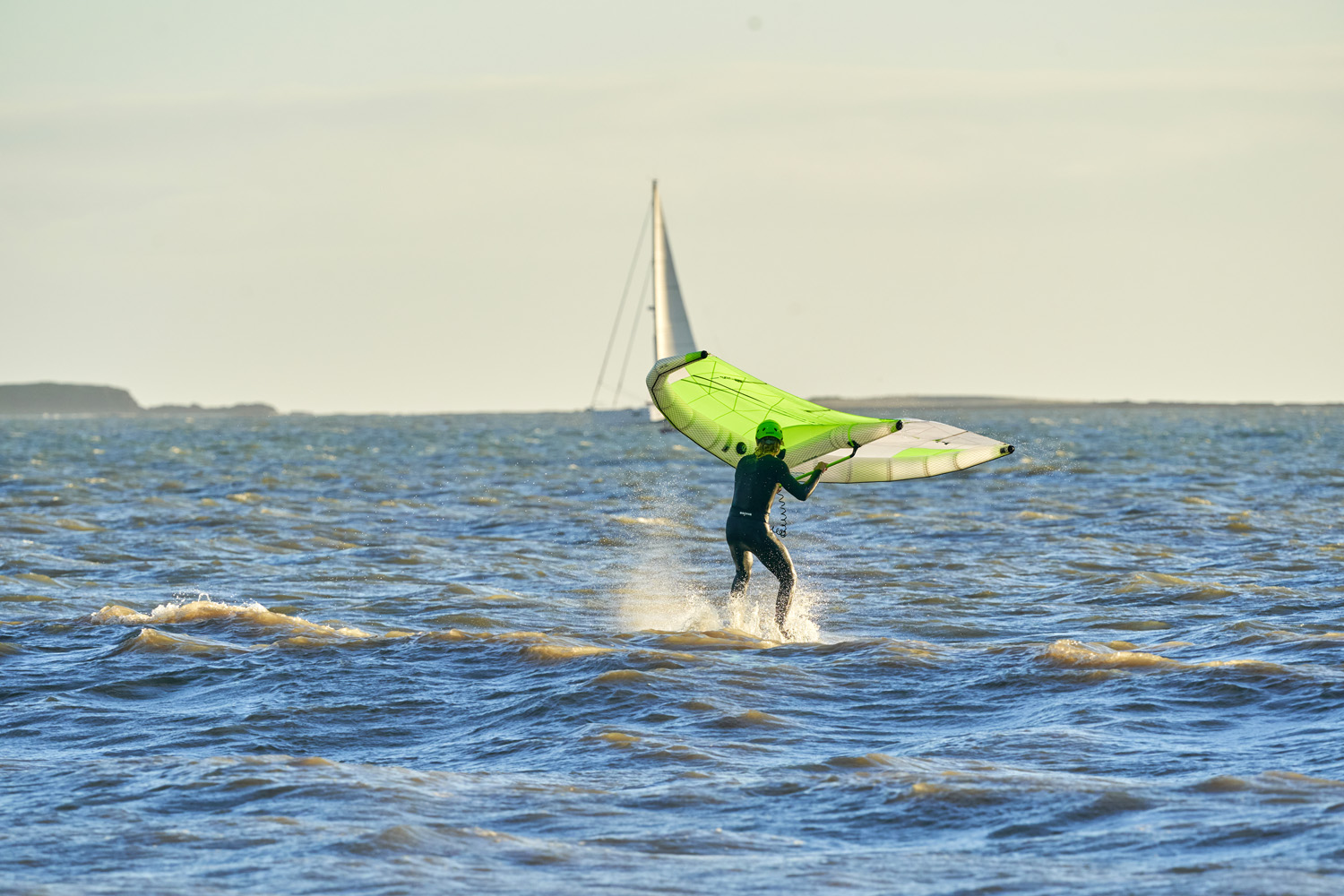
Transition from 360 to 540
“As soon as you master your Toeside Blind Frontside 360 to the point of not missing a single one, you might naturally want to do the last 180 that you usually do on the water in the air. You will then do a true 540.
To do this, you simply need to send everything even stronger from the beginning of the trick. So, especially for the rear arm, the kick in the rear foot to turn the board, and the wing’s rotation once you’ve caught it in the air. By putting more power into each of your movements, you’ll gain amplitude and rotation speed, giving you time to complete the full 540 in the air. You can also try choosing a larger kicker or stronger wind; it will make gaining amplitude easier.
Here, pay close attention to the wing’s last rotation, where the angle it will have is crucial. Since you’re in the air and have no resistance on the water, the wing’s movements will affect you much more. So, send it at a 45° angle to the water, keeping the front hand close to you to avoid being carried away.
Also, make sure to push with your rear foot while you’re in the air to facilitate the board’s rotation. Also, ensure to land slightly nose down so that the board doesn’t bury the tail if you leave it flat. For this, you can simply bring your rear foot toward you a bit and push with your front foot, which will tilt the board nose toward the water.
Prepare for contact with the water as it may be a bit more violent than on a simple 360 where the board arrives in the right direction. So, bend well and engage your wing to have support. Once you’re on the water and well stabilized, all you have to do is pump your wing and foil, and you’ve completed your first Toeside Blind Frontside 540!
Now that you have all the tips for this new trick, all that’s left is to grab your gear and head to the water!”
Malo Guénolé.




